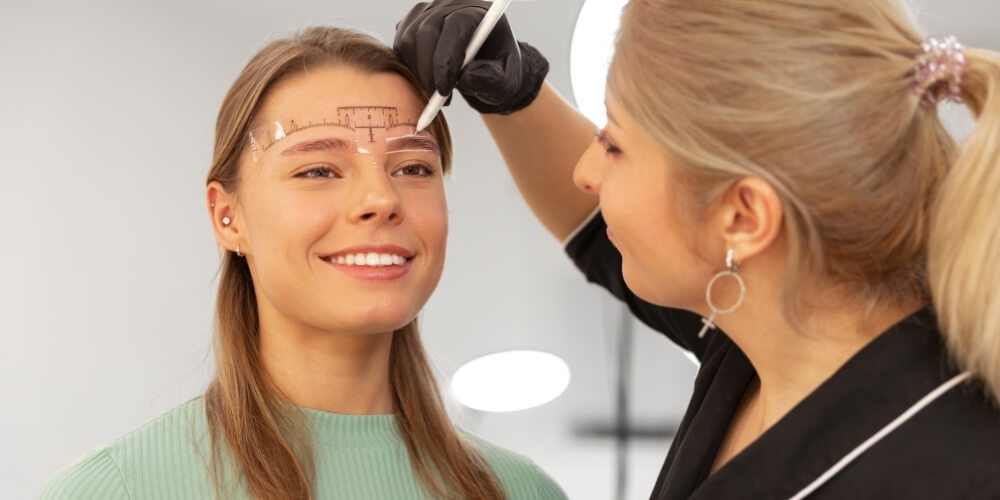Male Pattern Hair Loss
Anasayfa » Men’s Hair Loss: Causes

Men usually start to experience hair loss in their late 20s and it usually lasts until 50. Approximately 75% of the male population struggles with hair loss. Causes of hair loss for men include hair care habits, skin diseases, infections, malnutrition, and medication, but genetic factors often play a role.
Hair Loss
Hair loss is a condition that many men face at certain periods of life. Normally, a person loses between 50 and 100 hairs every day and this is considered a natural regeneration process. However, excessive hair loss or failure to regrow indicates the presence of a hair loss problem. Causes of hair loss include genetic factors, hormonal disorders, malnutrition, and environmental stress.
Each person has a different hair structure and hair loss stage. The symptoms of hair loss for men are usually first seen as a gradual recession of the hairline, followed by a decrease in hair density in the crown area. Although this process varies from person to person, it usually follows a specific pattern and indicates a condition known as androgenetic alopecia.
Common Causes of Hair Loss for Men
There are many causes of hair loss in men and recognizing them is important in developing an effective treatment plan. The most common cause is genetic factors; if there is a family history of hair loss, it is more likely to occur. Hormonal changes can also cause hair loss. In particular, the conversion of the hormone testosterone to dihydrotestosterone (DHT) causes hair follicles to shrink and eventually stop producing hair.
Lifestyle is also an important factor in hair loss. Stress, poor eating habits, and insufficient sleep can negatively affect hair health. Health conditions, medications, and environmental factors can also be effective in the occurrence of hair loss. Smoking and alcohol consumption cause damage to hair follicles and hair loss.
Androgenetic Alopecia (Male Pattern Hair Loss)
Androgenetic alopecia, also known as male pattern hair loss, is the most common cause of hair loss in men. The condition is associated with a genetic predisposition and male hormones (androgens). The action of DHT on hair follicles leads to thinning and loss of hair over time. It can often start in your 20s or 30s and progresses over time.
Androgenetic alopecia is usually diagnosed based on the stage of hair loss and personal and family history. Treatment includes medications to reduce the effects of DHT and treatments to stimulate hair growth. However, the condition is difficult to completely prevent or treat and usually requires long-term management.
Norwood-Hamilton Classification
The Norwood-Hamilton classification is a system for grading male pattern hair loss. This classification visually describes the severity and pattern of hair loss. It consists of seven main stages and several sub-stages. In the first stage, there is a slight recession of the hairline, while in the seventh and final stage, only hair remains on the back and sides of the head.
This classification is used by doctors and patients to track the progression of hair loss and evaluate treatment options. Each stage may require specific treatment approaches depending on the severity of the hair loss. For example, early stages may respond better to medication, while advanced stages may require surgical interventions such as hair transplantation.
Types of Male Hair Loss
Hair loss in men is not limited to androgenetic alopecia. Telogen effluvium is a condition in which hair follicles go into a resting phase as a result of sudden stress or shock situations, causing hair loss. Alopecia areata is hair loss in the form of a patchy appearance caused by the immune system attacking the hair follicles. Ringworm (tinea capitis) causes hair loss as a result of a fungal infection.
Each type of hair loss requires specific treatment approaches. Therefore, accurate diagnosis is vital for the success of treatment. Understanding the type of hair loss helps doctors create appropriate treatment plans. It is also important for clients to understand the causes of hair loss and treatment options so that they can take an active role in the process.
Factors Causing Hair Loss
Factors that cause hair loss vary, including genetic predisposition, hormonal imbalances, and lifestyle choices. Nutritional deficiencies, especially iron, zinc, protein, and vitamin B deficiencies, can lead to hair loss. In addition, endocrine conditions such as thyroid diseases or autoimmune diseases can also lead to hair loss.
Environmental factors can affect the health of hair follicles and cause hair loss. Pollution, sun exposure, and chemical treatments can disrupt the structure of the hair. Psychological stress can trigger hair loss by disrupting hormonal balance in the body. Medication is also a known side effect of hair loss, especially chemotherapy drugs used to treat cancer.
Prevention of Hair Loss in Men
Preventing hair loss means reducing risk factors and maintaining hair health. Regular hair care, a balanced diet and stress management play an important role in preventing hair loss. Adequate vitamin and mineral intake is also critical to support healthy hair follicles.
Medications and natural supplements that regulate DHT levels can help prevent hair loss. Also, changes in hairstyles and avoiding chemical treatments can help keep hair under less stress. Early diagnosis and treatment can slow or stop the progression of hair loss.
Hair Loss Treatment Options
Treatment for hair loss can differ depending on the origin of the condition and how severe it is. Medical treatments include medications such as finasteride and minoxidil. These drugs can reduce DHT levels and stimulate the growth of hair follicles. Newer treatments such as laser therapy and plasma-rich platelet (PRP) therapy can also promote hair growth.
Surgical options include hair transplantation methods. Follicular unit extraction (FUE) and direct hair implantation (DHI) are the most common hair transplant techniques. These procedures offer natural-looking results by transferring hair follicles to areas of hair loss. However, each treatment method should be customized according to the client’s needs and expectations.
Permanent Solution to Hair Loss Hair Transplant
Hair transplantation is one of the most effective methods in this regard. Hair transplantation is the process of taking one’s hair follicles from another area and transplanting them to areas that are sparse or completely lost. The state-of-the-art hair transplantation methods used during this procedure, especially FUE (Follicular Unit Extraction) and DHI (Direct Hair Implantation), provide you with healthy and natural-looking hair.
The FUE method is a procedure performed under local anesthesia and extracts individual follicles from the donor area. On the other hand, the DHI method is a technique in which hair follicles are directly transplanted with the help of a special pen. Both methods are minimally invasive, have high success rates and offer a painless experience.
Conclusion
Although hair loss in men can be caused by a variety of reasons, it is possible to manage and treat this condition. Understanding the causes of hair loss, evaluating appropriate treatment options, and addressing psychological effects are important parts of this process. Early intervention and the right treatment approaches can reduce the effects of hair loss and improve quality of life.
Frequently Asked Questions
- What causes hair loss?
There are many causes of hair loss, including genetic factors, hormonal imbalances, nutritional deficiencies, stress, and environmental factors.
- What should I do to prevent hair loss?
A balanced diet, regular hair care, stress management, and medications that regulate DHT levels can help prevent hair loss. Also, early diagnosis and treatment are important.
- Can hair loss be treated?
Hair loss can be treated. You can permanently end hair loss with hair transplantation.
- Share


